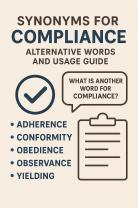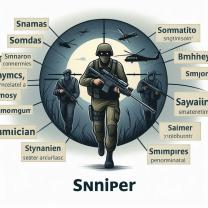How do you combine two sentences that have similar thoughts?
Combining two sentences with similar thoughts is a useful writing technique that can help improve the flow and clarity of your writing. There are several methods you can use to achieve this:
Using a Conjunction (Coordination): You can combine sentences with coordinating conjunctions like "and," "but," "or," "nor," "for," "so," and "yet." For example:
- Separate sentences: "I enjoy reading books. I also like watching movies."
- Combined with "and": "I enjoy reading books, and I also like watching movies."
Using a Semicolon: Semicolons can be used to join closely related sentences. This is often effective when the sentences are closely related or contrast each other. For example:
- Separate sentences: "She loves hiking. He prefers staying indoors."
- Combined with a semicolon: "She loves hiking; he prefers staying indoors."
Using an Em Dash (—): Em dashes can be used for emphasis and to connect closely related sentences. They can make the relationship between the ideas more prominent. For example:
- Separate sentences: "The weather was ideal. We decided to have a picnic."
- Combined with an em dash: "The weather was ideal—we decided to have a picnic."
Using a Colon: A colon can be used to introduce a related thought, explanation, or example. For example:
- Separate sentences: "The main points are: clarity, conciseness, and coherence. Correct grammar is also important."
- Combined with a colon: "The main points are: clarity, conciseness, coherence, and correct grammar is also important."
Using a Subordinating Conjunction (Subordination): You can make one sentence dependent on the other by using subordinating conjunctions like "although," "because," "while," "since," "if," and "when." For example:
- Separate sentences: "She went to the store. She needed to buy some groceries."
- Combined with a subordinating conjunction: "She went to the store because she needed to buy some groceries."
Using Appositives: An appositive is a noun or noun phrase that renames or explains another noun. This technique can be used to combine sentences. For example:
- Separate sentences: "My dog barks a lot. The little chihuahua from next door is the reason."
- Combined with an appositive: "My dog barks a lot, and the little chihuahua from next door is the reason."
Rearranging Sentences: Sometimes, simply rearranging the order of sentences can create a smoother transition. This may involve moving a sentence from the end of one paragraph to the beginning of the next to maintain coherence.
When combining sentences, always ensure that the resulting sentence makes sense and maintains the logical flow of your writing. Choose the method that best fits the context and the relationship between the two sentences. The goal is to create clear and concise writing that conveys your ideas effectively.
Combining Sentences with Similar Thoughts: A Writing Strategy
Combining sentences with similar thoughts is a writing strategy that can be used to improve the flow, clarity, and conciseness of your writing. It can also help to make your writing more engaging and interesting to read.
Recognizing Parallel Ideas and Themes in Sentences
The first step in combining sentences with similar thoughts is to recognize parallel ideas and themes in your sentences. Parallel ideas and themes are ideas that are similar in meaning or structure.
For example, the following sentences contain parallel ideas:
- The dog was brown and furry.
- The cat was black and fluffy.
The following sentences also contain parallel ideas, but they are expressed in a more complex structure:
- The dog, which was brown and furry, was barking loudly.
- The cat, which was black and fluffy, was chasing a mouse.
Techniques for Merging Sentences for Improved Flow
Once you have identified parallel ideas and themes in your sentences, you can merge them to improve the flow of your writing. There are a number of different techniques that you can use to merge sentences.
One common technique is to use a coordinating conjunction (and, but, or, nor, for, yet, so) to connect the two sentences. For example, the following sentences can be merged using the coordinating conjunction "and":
- The dog was barking loudly.
- The cat was chasing a mouse.
The dog was barking loudly, and the cat was chasing a mouse.
Another common technique is to use a subordinating conjunction (because, although, since, after, while, until, etc.) to connect the two sentences. For example, the following sentences can be merged using the subordinating conjunction "because":
- The dog was barking loudly.
- It was angry.
The dog was barking loudly because it was angry.
You can also use other techniques to merge sentences, such as using a semicolon, a colon, or a dash. The best technique to use will depend on the specific sentences that you are merging and the meaning that you want to convey.
Proofreading and Polishing Combined Sentences for Clarity
Once you have merged your sentences, it is important to proofread and polish them to ensure that they are clear and concise. Make sure that the combined sentences are grammatically correct and that they flow smoothly. You may also want to revise the combined sentences to make them more engaging and interesting to read.
The Art of Cohesion and Coherence in Combined Sentences
Cohesion and coherence are two important concepts in writing. Cohesion refers to how well the different elements of a sentence or paragraph are connected. Coherence refers to how well the different ideas in a sentence or paragraph are related to each other.
When combining sentences, it is important to keep cohesion and coherence in mind. Make sure that the combined sentences are connected to each other both grammatically and semantically. You should also make sure that the combined sentences flow smoothly and that the reader can easily follow the train of thought.
Conclusion
Combining sentences with similar thoughts is a writing strategy that can be used to improve the flow, clarity, and conciseness of your writing. It can also help to make your writing more engaging and interesting to read.
Here are some tips for combining sentences with similar thoughts:
- Identify parallel ideas and themes in your sentences.
- Use a coordinating or subordinating conjunction to connect the sentences.
- Use other techniques to merge sentences, such as using a semicolon, a colon, or a dash.
- Proofread and polish the combined sentences to ensure that they are clear, concise, and grammatically correct.
- Keep cohesion and coherence in mind when combining sentences.












